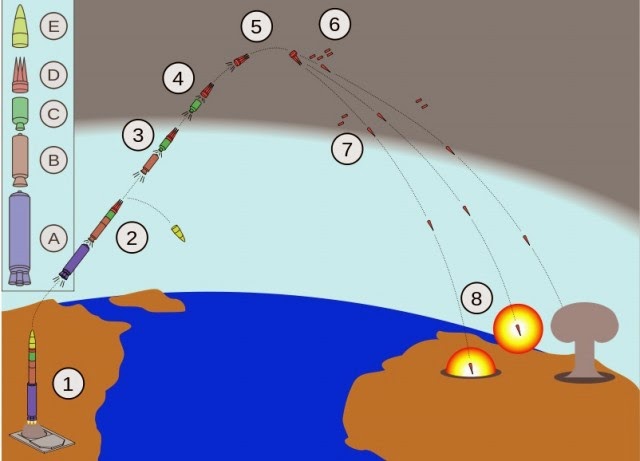India’s Quest for MIRV Technology

India is also working on multiple independently targetable re-entry vehicles (MIRVs). MIRVs would allow the missile to evade enemy missile defence system. Many sceptics are of the view that MIRVs would jeopardise the strategic stability between India and Pakistan. However, it must be noted that Pakistan is also developing MIRVs. Strategic stability is not jeopardised when two rival states possess similar capabilities; that is when parity is maintained between the two rival states. Strategic stability is jeopardised when one of the rival states possesses a weapon isystem while the other does not.
However, MIRV technology is not easy to develop and China struggled for years to miniaturise nuclear warheads to develop MIRV technology. Even the erstwhile Soviet Union and the United States took almost two decades to master the technology of nuclear warhead miniaturisation.

The Defence Research and Development Organisation (DRDO) has been working on the technological requirements. For instance, the Agni-V has a diameter of two meters that could make them capable of carrying MIRVs. In fact, according to reports, not just Agni-V, but missiles like the Agni-III are also being made capable of carrying MIRVs. However, it is not just the diameter of the missile system that would only matter, but the missile would also need a post-boost control vehicle that could act as a platform to release these multiple warheads.
This would not be a very difficult task as the Agni-II already possesses post-boost vehicle (PBV) integrated to its re-entry vehicle. The PBV not only allows to carry penetration aids but also improves the accuracy of the missile. Most countries pursuing advanced missile technology programme like the United States, France, and Russia use PBV on their ICBMs for enhanced accuracy. The MIRVs are probably one of the reasons why the actual range of the Agni-V is greater than 5,000kms as these technologies are believed to have adverse effect on the range of the missile and can reduce the range of the missile drastically.

While Agni-V is undergoing successful trials, these trials are expensive to conduct. Computer simulations, on the other hand, continuously help to improvise the technological parameters of the missile system. All these factors would need to be taken into consideration in order to enhance the credibility of the missile system.
-Debalina Ghoshal, Security Analyst wrote for Force Magazine
Edited by Shantanu K. Bansal


